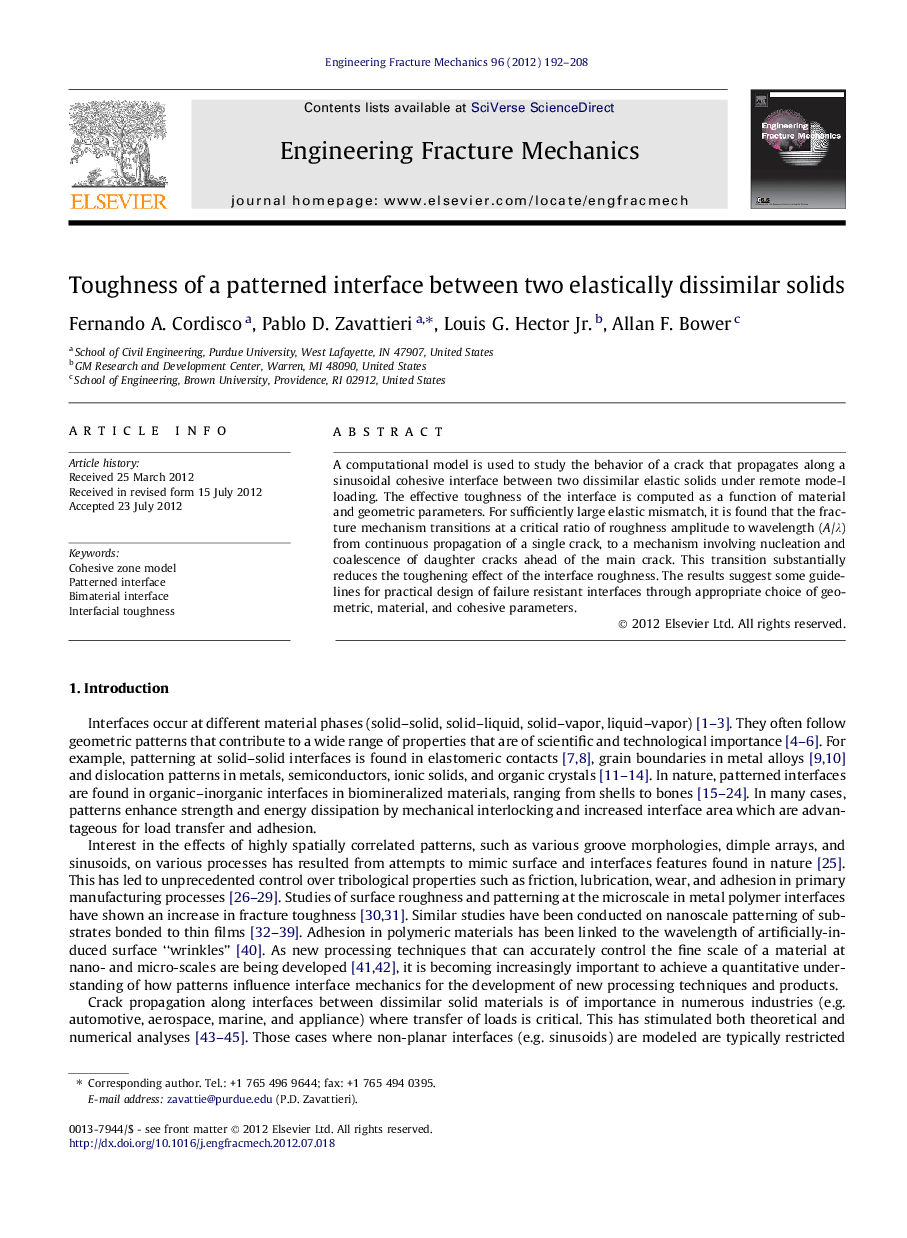| کد مقاله | کد نشریه | سال انتشار | مقاله انگلیسی | نسخه تمام متن |
|---|---|---|---|---|
| 770939 | 1463129 | 2012 | 17 صفحه PDF | دانلود رایگان |

A computational model is used to study the behavior of a crack that propagates along a sinusoidal cohesive interface between two dissimilar elastic solids under remote mode-I loading. The effective toughness of the interface is computed as a function of material and geometric parameters. For sufficiently large elastic mismatch, it is found that the fracture mechanism transitions at a critical ratio of roughness amplitude to wavelength (A/λ) from continuous propagation of a single crack, to a mechanism involving nucleation and coalescence of daughter cracks ahead of the main crack. This transition substantially reduces the toughening effect of the interface roughness. The results suggest some guidelines for practical design of failure resistant interfaces through appropriate choice of geometric, material, and cohesive parameters.
► We study fracture toughness of patterned bimaterial interfaces under mode-I loading.
► A cohesive interface between two elastic materials is used to model crack propagation.
► The fracture toughness depends primarily on the interface geometry (e.g., A/λ of the sinusoid).
► Our results suggest some guidelines for practical design of failure resistant interfaces.
Journal: Engineering Fracture Mechanics - Volume 96, December 2012, Pages 192–208